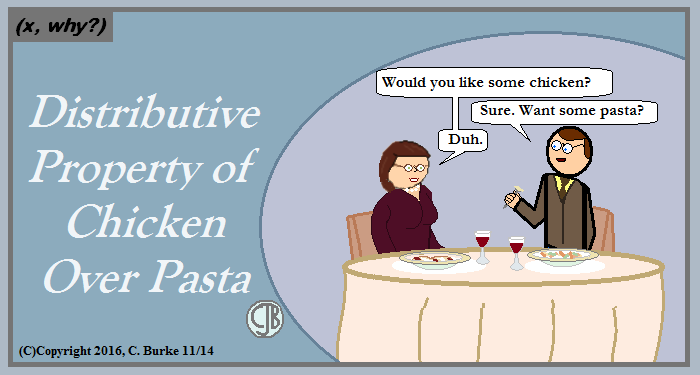exam, but I've received enough requests that I've decided to post some of the open-ended questions.
June 2016, Algebra II
25. Solve for x: (1 / x) - (1 / 3) = -(1 / 3x)
The answer is best given in picture form, shown below. Basically, you need to find a common denominator to combine the fractions. You can then solve by cross-multiplying.
Alternatively, you could just multiply all the terms by 3x because x, 3, and 3x are all factors of 3x. The multiplication would remove all the fractions from the problem.
x = 4.
26. Describe how a controlled experiment can be created to examine the effect of ingredient X in a toothpaste.
This was really is open-ended. You can write a lot of different things, but there are a few points which will be mandatory. Basically, you needed to have a number of people, (pick a number, say 10 or 20), and assign them randomly to two groups. One of these groups will try the new toothpaste, and the other is the control group which will not use the new toothpaste.
27. Determine if x - 5 is a factor of 2x3 - 4x2 - 7x - 10. Explain your answer.
One way to figure out if it is a factor is to divide the polynomial by (x - 5). If there is no remainder, then it is a factor.
Another is to say, if x - 5 is a factor of the polynomial, then 2x3 - 4x2 - 7x - 10 = 0 when x = 5. Substitute 5 for x and see if you get 0. (You won't.)
The image below shows the result of the division. It does not divide evenly. There is a remainder. So it is NOT a factor.
28. On the axes below, graph one cycle of a cosine function with amplitude 3, period pi/2, midline y = -1, and passing through the point (0,2).
You needed several things for this two points. You would lose 1 point for one mistake, and 2 points for 2 or more mistakes.
You needed to have a scale to the graph. It needed to pass through (0, 2) and have the proper midline (y = -1)
29. A suburban high school has a population of 1376 students. The number of students who participate in sports is 649. The number of students who participate in music is 433. If
the probability that a student participates in either sports or music is 974/1376, what is the probability that a student participates in both sports and music
The total number of students who play either sports or music is equal to the number who play sports PLUS the number who play music MINUS the ones who play BOTH. If you just add the first two numbers, then you will double count the students who participate in both activities.
You are given the total that play one or the other. You need to calculate the number who play both. Add the two numbers (649 + 433) and subtract 974 from that sum of 1082, which gives you 108. However, since this is a probability question, you need to write it as a fraction of the student population, or 108/1376.
The image shows what to do:
30. The directrix of the parabola 12(y + 3) = (x - 4)2 has the equation y = -6. Find the coordinates of the focus of the parabola.
The directrix of a parabola is a horizontal line running below the vertex. (Or above, if it opens down.) The focus is a point such that the distance from it to the parabola is equal to the vertical distance from the parabola to the directrix.
To find the coordinates of the focus, you need to find the coordinates of the vertex, which would be exactly in the middle on a straight line. The focus will have the same x-coordinate as the vertex. The focus will be as far above the vertex as the directrix is below.
Rewrite the equation 12(y + 3) = (x - 4)2
Divide both sides by 12: y + 3 = (1/12)(x - 4)2
Subtract 3 from both sides: y = (1/12)(x - 4)2 - 3
The vertex (h, k) is at (4, -3)
The directrix is y = -6. (-6) - (-3) = 3.
Add 3 to the vertex y-coordinate: (-3) + 3 = 0, which must be the y-coordinate of the focus.
The focus is at (4, 0).
31. Algebraically prove that (x3 + 9)/(x3 + 8) = 1 + (1)/(x3 + 8), where x =/= -2.
Change 1 into (x3 + 8)/(x3 + 8). Do the addition. The left and right sides are equal.
32. A house purchased 5 years ago for $100,000 was just sold for $135,000. Assuming exponential
growth, approximate the annual growth rate, to the nearest percent.
Set up the compound interest equation, A = P(1 + r/n)^(nt).
Substitute what you know, A = 135,000, P = 10000, n = 1 (annual), t = 5 years: 135000 = 100000(1 + r/1)^((1)(5))
Solve for r:





























